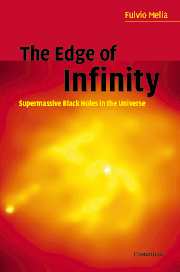5 - Relativistic ejection of plasma
Published online by Cambridge University Press: 11 August 2009
Summary
Other than the spectacle of an obscured event horizon quivering before a bright sheet of background light, the most spectacular blackhole phenomenon astronomers can witness from the remoteness of Earth is a relativistic jet of plasma piercing the darkness of intergalactic space. Among the most dizzying cosmic displays in nature, these funnels of energetic particles probe the medium surrounding roughly one in 20 known supermassive black holes. A prominent jet was evident on the very first quasar photograph (of 3C 273), and glows even more brilliantly as a high-energy ray of light in modern Chandra images (see Fig. 1.2). For the most part, however, black-hole jets manifest themselves in a “parallel” universe – indeed, their ghostly apparitions pre-empted the discovery of supermassive black holes by several decades, though without any portent of what they would later reveal. And once again, astronomers can thank the telephone company for facilitating one of the most amazing advances in the history of science, on a par with the discovery – six decades later – of the cosmic microwave background radiation through the commercialization of space.
Not long after a demonstration that the substance of light behaves like a series of waves undulating through time and space, Guglielmo Marconi (1874–1937) successfully initiated transatlantic communications in 1901 using wireless radio.
- Type
- Chapter
- Information
- The Edge of InfinitySupermassive Black Holes in the Universe, pp. 92 - 110Publisher: Cambridge University PressPrint publication year: 2003

